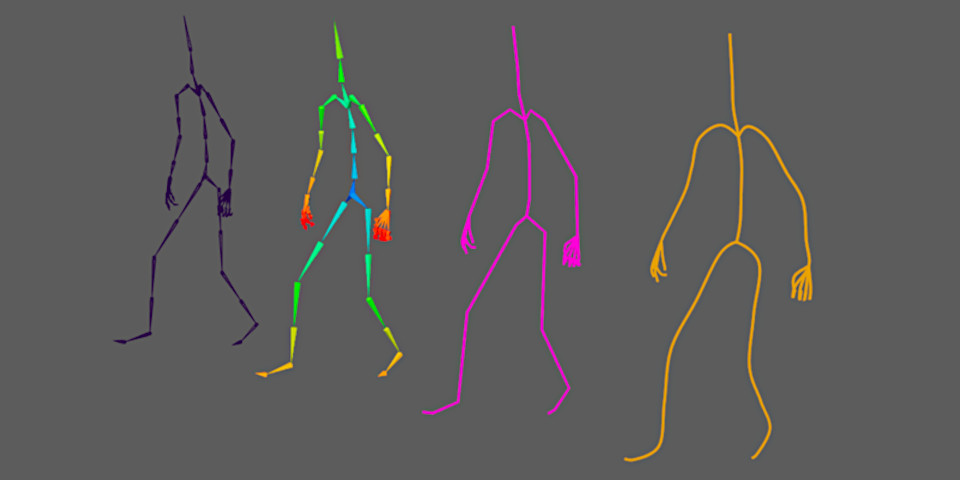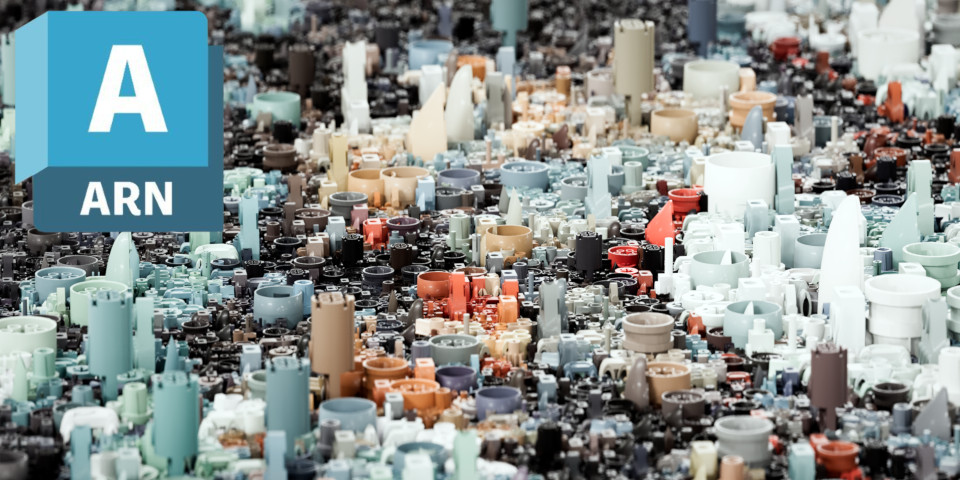Autodesk releases Maya 2025.1

Autodesk has posted the online documentation for the new features in Maya 2025.1, the latest version of its 3D modeling and animation software.
It’s a wide-ranging update, introducing a new Flow Retopology plugin for processing retopology jobs in the cloud, and previewing new character rigging workflows in Bifrost.
There are also workflow improvements to the 3D modeling and animation tools, and better support for MaterialX workflows in look development toolset LookdevX.
At the time of writing, Autodesk hasn’t announced the release on its product timeline, but according to the online documentation, it is now available to subscribers.
3D modeling: workflow improvements to Smart Extrude
Smart Extrude, the new geometry-extrusion system ported over from 3ds Max to Maya in Maya 2025, gets several workflow improvements in Maya 2025.1.
Key changes include the option to access Smart Extrude from the poly modeling toolkit, and a viewport icon to distinguish its manipulator from that of the Move tool.
Retopology: new Flow Retopology for Maya plugin
For retopologizing models, Autodesk has released Flow Retopology for Maya 1.0, a new plugin available separately from the core application.
It mimics the functionality of the existing Retopologize tool, but makes it possible to submit retopology jobs to run in the cloud, rather than on the user’s machine.
As well as preventing the Maya interface from freezing while processing complex geometry, the plugin makes it possible to process multiple retopology jobs in parallel.
Maya subscribers can process up to 30 jobs per month in the cloud, providing that they don’t take longer than six hours to complete. You can find details in current terms of use.
Look development: better MaterialX workflows in LookdevX
Autodesk has also updated LookdevX, the toolset for creating USD and MaterialX shading graphs introduced in Maya 2024.
Workflow improvements in LookdevX 1.4.0 include the option to hide nodes by right-clicking them, and a Node Library view for browsing nodes.
The new MaterialX data model now supports volume shaders as well as surface and displacement shaders, making it possible to preview volumetric effects like smoke.
It is also now possible to preview many of the key Arnold materials, including standard_surface, while working with the MaterialX model.
Animation: workflow improvements to the Graph Editor and Dope Sheet
Animators get workflow improvements to the Graph Editor and Dope Sheet.
In both, it is now possible to zoom in and out based on the location of the cursor rather than the center of the window, making it easier to navigate complex animations.
The Dope Sheet Editor also gets new options for selecting keys, snapping, baking channels, and exporting channel sets; and now supports multiple audio tracks.
It is also now possible to adjust gamma and exposure levels on Playblasts.

Simulation: a first taste of rigging workflows in Bifrost for Maya
Bifrost for Maya, Autodesk’s plugin for authoring multiphysics effects, also gets a number of workflow improvements.
Key changes in Bifrost for Maya 2.10 include a new Node Library window, making it possible to add nodes to a graph by dragging and dropping.
Unlike the existing Tab menu, it can be filtered by namespace, and makes it possible to select and add multiple nodes at once.
There are also two new SDKs: the Executor SDK for executing Bifrost graphs from the command line, making it possible to automate common tasks; and the Geometry SDK, which provides access to geometry created by Bifrost graphs.
However, perhaps the most interesting change is a new set of nodes for constructing and processing skeletal geometry.
They are still a work in progress, but provide “an early look at the possibilities for [developing] rigging workflows in Bifrost”.

Rendering: OIDN denoising enabled by default in Arnold
The integration plugin for Autodesk’s Arnold renderer has been updated, with MtoA 5.4.1.2 enabling Open Image Denoise (OIDN) render denoising by default, and improving workflow when using RenderView snapshots.
It also supports the new functionality from Arnold 7.3.1.
Pipeline integration: updates to USD for Maya and the Substance plugin
Maya’s USD and Substance plugins have also been updated, with USD for Maya 0.28 making it possible to lock USD layers to prevent accidental editing.
Substance for Maya 3.0 adds support for the Substance 3D Connector, Adobe’s new open-source framework for transferring data between DCC applications.
Maya Creative 2025.1 also released
Autodesk has also unveiled Maya Creative 2025.1, the corresponding update to the cut-down edition of Maya aimed at smaller studios, and available on a pay-as-you-go basis.
It includes most of the new features from Maya 2025.1, with the exception of the Flow Retopology plugin, and the Bifrost update.
Price and system requirements
Maya is available for Windows 10+, RHEL and Rocky Linux 8.7/9/3, and macOS 12.0+.
The software is rental-only. Subscriptions cost $235/month or $1,875/year.
In many countries, artists earning under $100,000/year and working on projects valued at under $100,000/year, qualify for Maya Indie subscriptions, priced at $305/year.
Maya Creative is available on a pay-as-you-go basis, with prices starting at $3/day, and a minimum spend of $300/year.
Read an overview of the new features in Maya 2025 on Autodesk’s website
Read a full list of new features in Maya 2025.1 in the online documentation
Have your say on this story by following CG Channel on Facebook, Instagram and X (formerly Twitter). As well as being able to comment on stories, followers of our social media accounts can see videos we don’t post on the site itself, including making-ofs for the latest VFX movies, animations, games cinematics and motion graphics projects.
